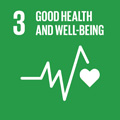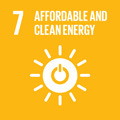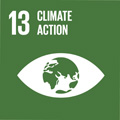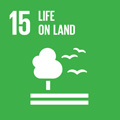- Docente: Elena Bernardi
- Credits: 6
- SSD: CHIM/12
- Language: Italian
- Teaching Mode: Traditional lectures
- Campus: Ravenna
- Corso: First cycle degree programme (L) in Chemistry and Technologies for the Environment and Materials (cod. 8515)
Learning outcomes
After completing the course, the student will have the basic knowledge of the structure and the chemical-physical processes characterizing the different environmental media: air, water, soil. The student will also acquire and will be able to apply the basics needed to evaluate sources, fate and interactions with the environment of the main classes of pollutants, identifying potential environmental impact of anthropogenic processes.
Course contents
Prerequisites
- Elementary functions: powers, roots, exponential and logarithm. Algebraic equations (Course: Mathematics with exercises)
- Dimensional formulae and physical units. Errors. (Course: Physics)
- Chemical reactions and conservation of mass. The gaseous state. Pressure and temperature of a gas; Mixtures of gases and Dalton law of partial pressures. Homogeneous chemical equilibrium; Concentration units; Equilibrium constants and their use; Equilibria in solution; Ionic product of water; pH; Acids and bases and pH of their solutions; Hydrolysis of salts and pH; Buffered solutions and titration; Solubility (Course: General and Inorganic Chemistry with Laboratory)
- General properties of transition elements. The coordination chemistry (Course: Inorganic Chemistry with Laboratory)
- Functional groups, reactivity and classification of organic compounds (including natural organic compounds: proteins, sugars, fatty acids, etc.). (Course: Organic Chemistry with Laboratory)
- Knowledge of Thermodynamics. Phase equilibria in one-component and multi-component systems. The law of the ideal gas state. Molar fraction and partial pressure. First and second law of thermodynamics. Physical transformations of pure substances. Simple mixtures. Principles of photochemistry and radicalic reactions. (Course: Physical Chemistry)
Course contents
- Introduction
Presentation of the course and methods of examination. Introduction to environmental chemistry. Environmental sustainability.
The complexity of the environmental processes: biogeochemical cycles.
Pollutants: definitions, general chemical-physical properties and environmental behavior
(estimated time spent in the classroom: ~ 10h)
- Atmosphere
Structure and chemical-physical characteristics of the atmosphere. Solar radiation.
Stratospheric ozone and mechanisms inducing the “ozone hole” phenomenon.
Greenhouse gases, greenhouse effect, global warming and climate change.
The troposphere. Planetary Boundary Layer. Sources, reactions and effects of the main inorganic and organic compounds (in particular OH radical, sulfur and nitrogen compounds, tropospheric ozone, VOC, IPA, dioxins, PCB, heavy metals). Photochemical smog. Particulate matter: classification, sources, chemical composition, environmental and health effects. Atmospheric depositions and acid rains.
(estimated time spent in the classroom: ~ 25h)
- Water
Water properties, hydrosphere, hydrologic cycle. Characteristics of water bodies.
Dissolved gas in natural water: Henry’s law and stagnant film model. Oxygen and carbon dioxide in the water bodies. BOD, COD. The Carbonate System in Aquatic Systems.
Alkalinity, acidity, hardness. Behaviour of metals in water.
Dissolved and particulate matter, sediment. Interactions between water and other phases.
Main organic and inorganic water pollutants: sources, reactions and effects.
(estimated time spent in the classroom: ~ 10h)
- Soil
Geosphere and soil. Weathering processes. Processes and factors influencing the soil formation. Soil profile and horizons.
Inorganic compounds in soil. Clay minerals structure and properties.
Organic compounds in soil. Humic and non-humic substances.
Physical and chemical properties of soil.
Organic and inorganic contaminants and their interaction with soil components.
Outlines of waste management.
(estimated time spent in the classroom: ~ 8h)
Readings/Bibliography
Fundamental
- Teaching material made available online by the teacher on the Platform "Insegnamenti OnLine" – IOL (https://iol.unibo.it ). The teaching material is available to the students enrolled in the course on the Platform "Insegnamenti OnLine" – IOL (https://iol.unibo.it ). Any passwords necessary to access the documents will be provided by the teacher.
- Lecture notes
Recommended
Although warmly recommended to the students for widening their knowledge of the various topics, these books are not formally adopted as textbooks nor followed in a detailed way.
Stanley E. Manan, Chimica dell'ambiente, Piccin Editore, 2000
Colin Baird, Michael Cann, Chimica ambientale, Zanichelli, Ed 2006 or 2014
Grady Hanrahan, Key concepts in environmental chemistry, Elsevier (http://www.sciencedirect.com/science/book/9780123749932)
Seinfeld & Pandis, Atmospheric chemistry and physics: from air pollution to climate change, Wiley & Sons, 2006
Donald L. Sparks, Environmental soil chemistry, Academic Press, 2003
Teaching methods
Frontal lesson with PC presentation and videos; reactions, examples and exercises will be explained at the blackboard.
During the course, exercises, group activities and/or presentation of case studies can be proposed.
Periodic interactive sessions of self-evaluation and review, also through the support of free apps for smartphones, are performed.
The course could include seminars and conferences on specific subjects.The frequency of the lessons plays an important role in understanding the issues addressed, their interconnection and environmental implications.
Assessment methods
The final examination consists in a written test (max 2.5 hours) that aims to verify the achievement of the following learning outcomes:
- Knowledge of the structure and the chemical-physical processes characterizing the different environmental media: air, water, soil
- Knowledge of the main pollutants, their sources and their behavior in the environment
- Ability to apply the knowledge acquired to evaluate possible interactions between pollutants and environment and to identify potential environmental impacts related to human activities.
The written test consists in open questions, multiple choice questions and exercises (max 13, in total) aimed at verifying the level reached in the acquisition of expected knowledge and skills. The weight assigned for each question is made known to the students at the beginning of the examination and are related to the difficulty of the question and to the level of learning checked. In the case of open questions, the relevance, completeness and clarity of the response, the ability to synthesize (where required), the achievement of an organic and critical vision of the issues addressed and the use of a proper scientific language will be evaluated. The evaluation is expressed in thirtieths and the exam is passed if the score is at least 18/30: laude is given to test very well performed.
During the test it is not allowed the use books or lecture notes. Calculator is required (no tablet or cell phones). The sheets required for the test will be provided by the teachers.
In order to sit for the examination, it is necessary to enter one's name in the list through AlmaEsami (https://almaesami.unibo.it/) before the deadline (visible under “Exam sessions” in the Teaching page of the teacher website).
In case of exam sessions with less than four candidates the teacher can evaluate whether to perform the final examination through an oral exam (organized similarly to the written test).
Students with disabilities or DSA are suggested to request support at least 15 days before the day of the exam, sending an email to both the teacher and the Student Service with Disabilities and DSA of the University of Bologna (http: //www.studentidisabili.unibo.it/).
Teaching tools
PC and projector, blackboard, Moodle Learning Platform "Insegnamenti OnLine", free Apps for Smartphones.
Students with DSA or disability can contact the Student Services for Disabilities and DSA of the University of Bologna (http://www.studentidisabili.unibo.it/) and the contact person of the Department (giorgio.bencivenni2@unibo.it) or the teacher of the course to agree on the most suitable ways to consult the teaching material and access the classrooms for lectures.
Office hours
See the website of Elena Bernardi
SDGs




This teaching activity contributes to the achievement of the Sustainable Development Goals of the UN 2030 Agenda.
